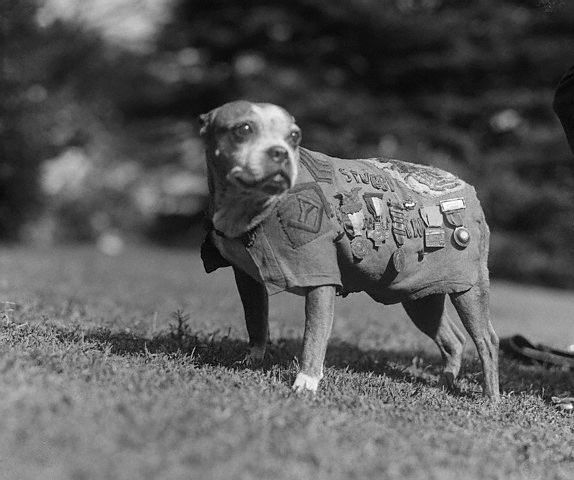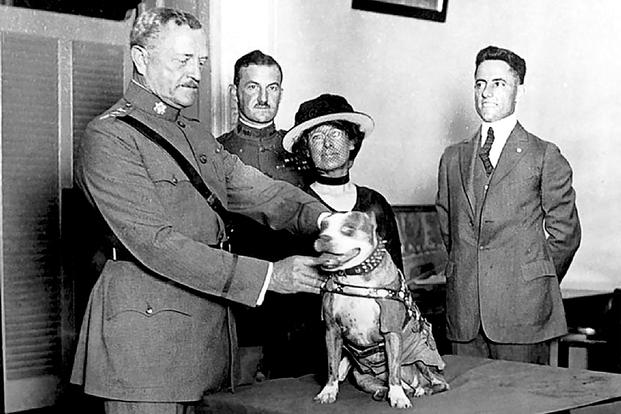
MIDDLETOWN, Conn. (AP) – A new monument in Connecticut honors service animals with a statue of one of the nation’s most famous war dogs.
The sculpture, “Stubby Salutes,” was unveiled Saturday in Veterans Memorial Park in Middletown.
Originally found wandering the campus of Yale University, Stubby was a Boston terrier mix who traveled to Europe with a Connecticut unit during World War I. He served for 18 months in 17 battles on the Western Front. He became famous for warning soldiers of incoming gas attacks and locating wounded soldiers on the battlefield, staying with them until help arrived.
His story was the subject of a major animated movie last month, “Sgt. Stubby: An American Hero.”
The bronze sculpture, created by artist Susan Bahary, is the culmination of a three-decade effort to create a memorial, spearheaded by the descendants of Robert Conroy, the army corporal who adopted Stubby during training.
“I wanted to capture his likeness. of course,” Bahary said as a guest on Fox News. “I also wanted to capture that beautiful spirit. That courage. His bravery. His ability to cheer up the troops both on the battlefield and at home.”
After returning home from war, Stubby became a celebrity and marched in, and normally led, many parades across the country. He met Presidents Wilson, Coolidge and Harding. In 1921 General John J. Pershing presented the canine with a gold medal from the Humane Education Society.

Starting in 1921, Stubby attended Georgetown University Law Center along with his owner, Corporal Conroy. At the university, Stubby became the Georgetown Hovas’ team mascot. He would be given the football at halftime and would nudge the ball around the field to the amusement of the fans.
Stubby died in his sleep in 1926. His New York Times obituary covered an entire half-page, far surpassing the newspaper space given to prominent humans of that period. Stubby was taxidermied and now resides in perpetuity at the Smithsonian Institution.
_________
Auction Central News contributed to this report.
Copyright 2018 Associated Press. All rights reserved. This information may not be published, broadcast, rewritten, or redistributed.


